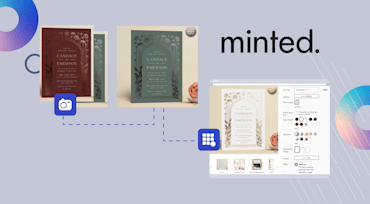Part 1 of this post defines the capabilities of an enhanced Gravatar service, which I named Clavatar, and describes the following initial steps for building it:
- Set up the database.
- Establish the user-registration process.
- Install the Cloudinary PHP Library, version 2.0.0-Beta.
- Implement the image-upload operation.
- Associate images with user accounts.
This post, part 2 of the series, explains how to make Clavatar work like Gravatar and to develop Clavatar’s capabilities of enabling requests for various versions of the images related to user accounts.
Image Retrieval Through User Hashes
Recall that Gravatar retrieves user images through their hash in a URL, as in this example:
https://www.gravatar.com/avatar/205e460b479e2e5b48aec07710c08d50
To enable Clavatar to do the same, set up the API endpoint, as follows:
1. Add the following to the routes/web.php file:
2. Add the following retrieveAvatar function to the app/Http/Controllers/AvatarController.php file:
public function retrieveAvatar(Request $request, $hash) { $defaultImageTag = $this->cloudinary->imageTag('default')->serialize(); $defaultImageUrl = $this->cloudinary->image('default')->toUrl(); $user = User::where('hash', $hash)->first(); if(is_null($user)) { return $defaultImageTag; } $publicId = $user->avatar_id; $imageUrl = $this->cloudinary->image($publicId); $imageTag = $this->cloudinary->imageTag($publicId); return $imageTag->serialize(); }
The code above does the following:
$this->cloudinary->imageTag('default')->serialize();returns an<image>tag that displays an image with the public ID (public_id)default.$this->cloudinary->image('default')->toUrl();returns a link to the default image.User::where('hash', $hash)->first();checks if this hash is in the database and, if so, returns the image associated with the user account. Otherwise, the code returns the default image.
default.3. Verify that everything works by running the API endpoint in a browser:
With a random hash, e.g.:

With a valid hash, e.g.:

Now Clavatar works exactly like Gravatar.
Implementation of Other Features
Feature: Enablement of the ability to request for an image of any size by adding the size parameter, e.g., s=400 or size=400, to the URL.
Implementation Step: Update the retrieveAvatar function, as follows:
public function retrieveAvatar(Request $request, $hash) { $defaultImageTag = $this->cloudinary->imageTag('default')->serialize(); $defaultImageUrl = $this->cloudinary->image('default')->toUrl(); $user = User::where('hash', $hash)->first(); if(is_null($user)) { return $defaultImageTag; } $publicId = $user->avatar_id; $imageUrl = $this->cloudinary->image($publicId); $imageTag = $this->cloudinary->imageTag($publicId); if($request->has('s') || $request->has('size')) { $size = $request->query('s') ?: $request->query('size'); $imageUrl->resize(Resize::fill($size, $size)); $imageTag->resize(Resize::fill($size, $size)); } else { $imageUrl->resize(Resize::fill(100,100)); $imageTag->resize(Resize::fill(100,100)); } return $imageTag->serialize(); }
Result (Example):
![]()
Feature: Enablement of the ability to return a cartoonized version of an image by adding the d=cp parameter to the URL.
Implementation Step: Add the following to the retrieveAvatar function:
public function retrieveAvatar(Request $request, $hash) { …. …. if($request->has('d')) { $defaultOption = $request->query('d'); if($defaultOption == 'cp') { $imageUrl->effect(Effect::cartoonify()); $imageTag->effect(Effect::cartoonify()); } } return $imageTag->serialize(); }
Result (Example):
![]()
Feature: Enablement of the ability to request for the black-and white version of an image by adding the d=bw parameter to the URL.
Implementation Step: Update the retrieveAvatar function, as follows:
public function retrieveAvatar(Request $request, $hash) { …. …. if($request->has('d')) { $defaultOption = $request->query('d'); if($defaultOption == 'cp') { $imageUrl->effect(Effect::cartoonify()); $imageTag->effect(Effect::cartoonify()); } if($defaultOption == 'bw') { $imageUrl->effect(Effect::blackWhite(30)); $imageTag->effect(Effect::blackWhite(30)); } } return $imageTag->serialize(); }
Result (Example):
![]()
Feature: Enablement of the ability to request for an artistic version of an image by adding the d=hk parameter to the URL.
Implementation Step: Update the retrieveAvatar function, as follows:
public function retrieveAvatar(Request $request, $hash) { …. …. if($request->has('d')) { $defaultOption = $request->query('d'); if($defaultOption == 'cp') { $imageUrl->effect(Effect::cartoonify()); $imageTag->effect(Effect::cartoonify()); } if($defaultOption == 'bw') { $imageUrl->effect(Effect::blackWhite(30)); $imageTag->effect(Effect::blackWhite(30)); } if($defaultOption == 'hk') { $imageUrl->effect(Effect::artisticFilter(ArtisticFilter::HOKUSAI)); $imageTag->effect(Effect::artisticFilter(ArtisticFilter::HOKUSAI)); } } return $imageTag->serialize(); }
Result (Example):
![]()
Feature: Enablement of the ability to request for the compressed and optimized version of an image by adding the q=auto parameter to the URL.
Implementation Step: Add the following to the retrieveAvatar function:
public function retrieveAvatar(Request $request, $hash) { …. …. …. …. if($request->has('q')) { $qualityOption = $request->query('q'); if($qualityOption == 'auto') { $imageUrl->quality(Quality::auto()); $imageTag->quality(Quality::auto()); } } return $imageTag->serialize(); }
Result (Example):
![]()
Feature: Enablement of the capability to request for the best format of an image by adding the f=auto parameter to the URL. This version ensures the most suitable format for whichever browser is delivering the image.
Implementation Step: Add the following to the retrieveAvatar function:
public function retrieveAvatar(Request $request, $hash) { …. …. …. …. if($request->has('f')) { $formatOption = $request->query('f'); if($formatOption == 'auto') { $imageUrl->format(Format::auto()); $imageTag->format(Format::auto()); } } return $imageTag->serialize(); }
Result (Example):
![]()
Feature: Enablement of the ability to request for the rounded-corners version of an image by adding the a rc=y parameter to the URL.
Implementation Step: Add the following to the retrieveAvatar function:
public function retrieveAvatar(Request $request, $hash) { …. …. …. …. if($request->has('rc')) { $roundedOption = $request->query('rc'); if($roundedOption == 'y') { $imageUrl->roundCorners(RoundCorners::max()); $imageTag->roundCorners(RoundCorners::max()); } } return $imageTag->serialize(); }
Result (Example):
![]()
Feature: Enablement of the ability to rotate an image by adding the r=<angle> parameter, e.g., r=40, to the URL. The value of the angle must be between 1 and 100.
Implementation Step: Add the following to the retrieveAvatar function:
public function retrieveAvatar(Request $request, $hash) { …. …. …. …. if($request->has('r')) { $roundedOption = $request->query('r'); $imageUrl->rotate($roundedOption); $imageTag->rotate($roundedOption); } return $imageTag->serialize(); }
Result (Example):
![]()
Feature: Enablement of the ability to request for a color-bordered version of an image by adding the b=<color> parameter, e.g., b=red, to the URL.
Implementation Step: Add the following to the retrieveAvatar function:
public function retrieveAvatar(Request $request, $hash) { …. …. …. …. if($request->has('b')) { $borderOption = $request->query('b'); $imageUrl->border(Border::solid()->width(3)->color($borderOption)); $imageTag->border(Border::solid()->width(3)->color($borderOption)); } return $imageTag->serialize(); }
Result:
![]()
Combination of Parameters
You can combine as many parameters as you desire—in any order—to retrieve the image associated with an account.
Example:
To retrieve a cartoonized, circular avatar of a 500x500 size, optimized and in the best format, add the related parameters to the URL:
http://localhost:8000/avatar/7b71271e3c93106dbc3b68fb867344e9?s=500&d=hk&rc=y&f=auto&q=auto
Cloudinary returns this image:
![]()
Feel free to clone the Clavatar repository on GitHub and run the helpful service.
More Cloudinary Features
With Cloudinary, you can automate your entire image-management lifecycle, from upload and transformation to optimization and delivery. Notably, Cloudinary’s upload widget offers a superfast way to upload multiple images in bulk. The platform also features numerous capabilities for editing and managing videos.
Do check them out.





